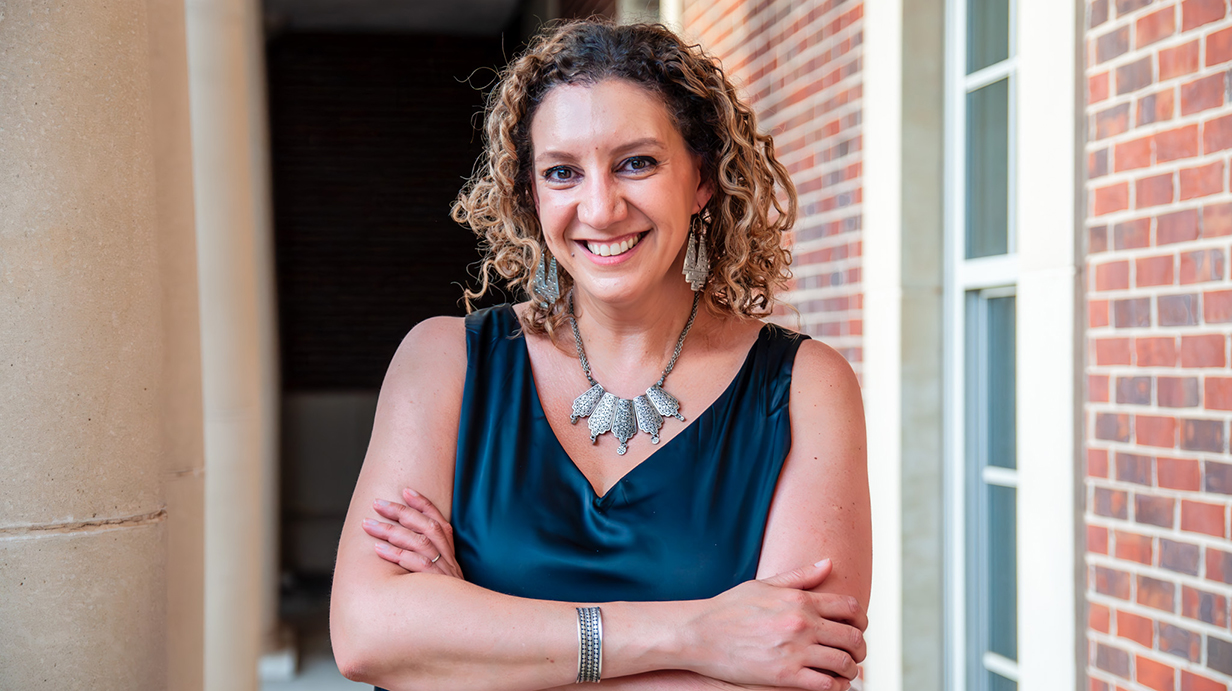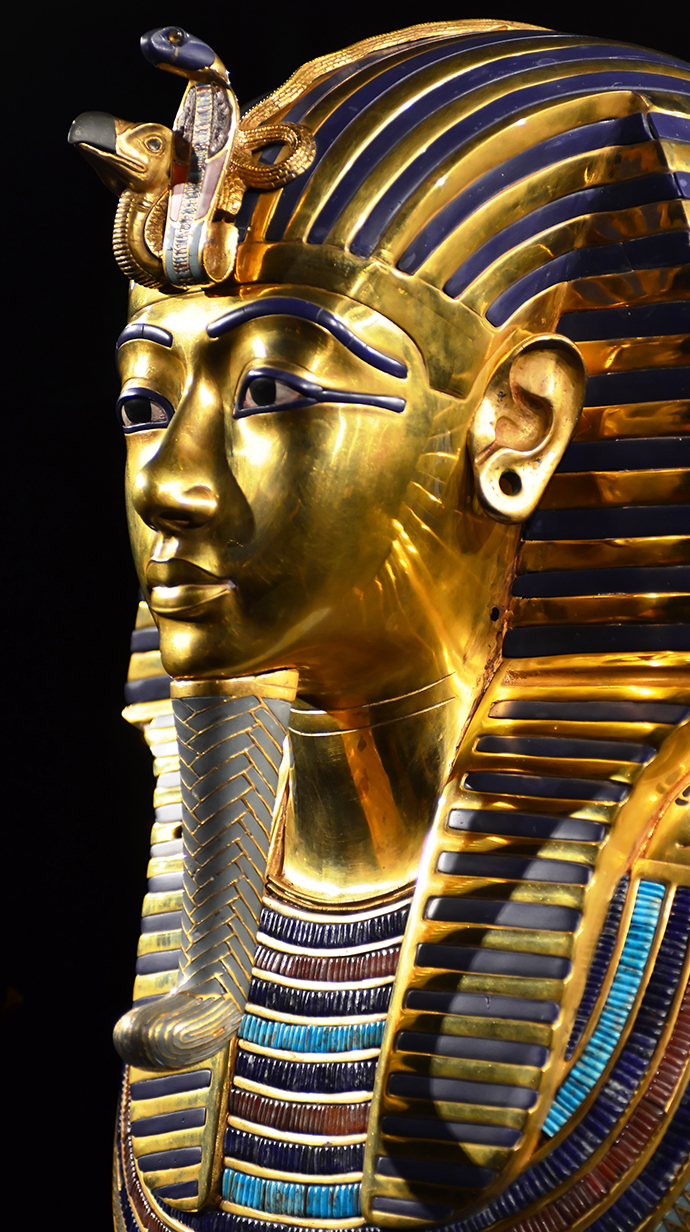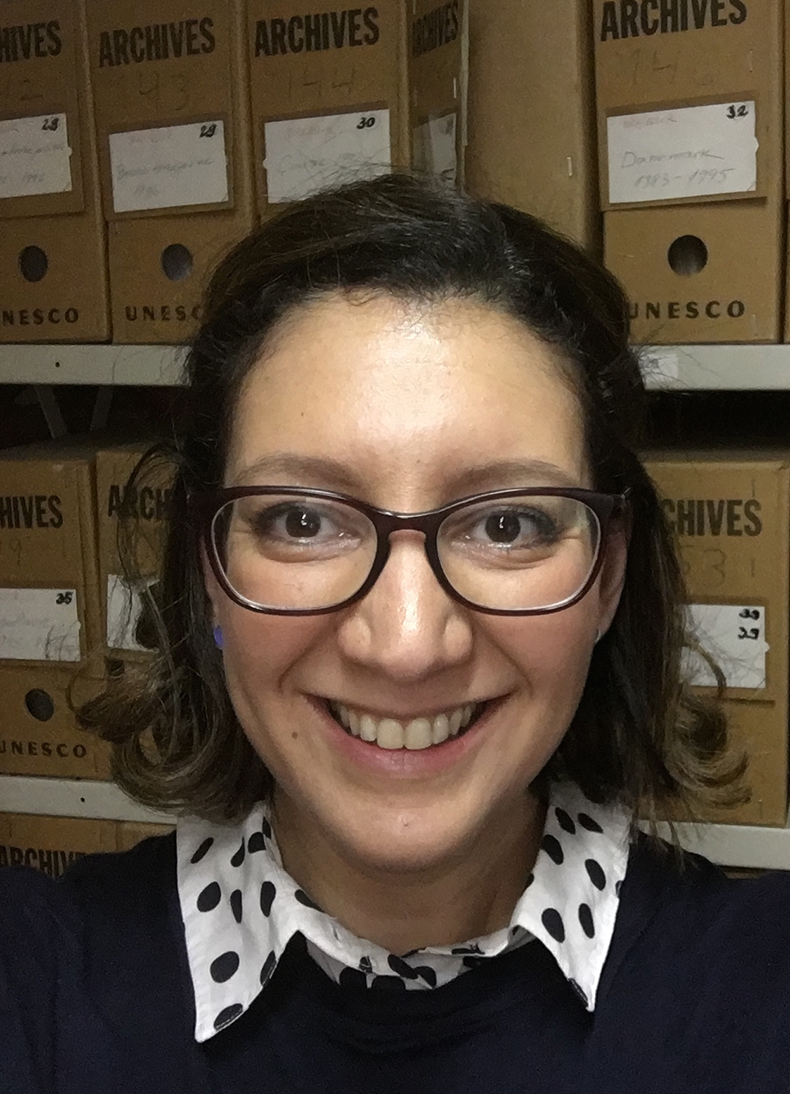Professor Studies Tutankhamun's Travels in America
Vivian Ibrahim lands National Endowment for the Humanities grant, researches upcoming book

OXFORD, Miss. – Pharaoh Tutankhamun's greatest act of diplomacy actually happened more than 3,000 years after his death, a University of Mississippi researcher contends in her upcoming book.
Vivian Ibrahim, an associate professor of history and international studies, is studying how Egypt's best-loved mummy became an influential figure not only of the country's ancient history, but also of its future. Ibrahim hopes to complete her research with the help of a National Endowment for the Humanities' Summer Stipend.
"I'm looking at the global Tut tours that took place in the '60s and '70s," the Ole Miss professor said. "Egypt as a newly decolonized state used these tours to promote cultural diplomacy, raise financial aid for their new infrastructure projects and promote peace in the Middle East.

Artifacts from Pharaoh Tutankhamun’s tomb were a major draw at cities across the United States in the 1970s. Vivian Ibrahim is researching the impact of the King Tut tours on perceptions of Egypt. Adobe Stock photo
"They also changed the way worldwide museum practice took place. This was the beginning of what we now know to be the blockbuster tours, and it started with King Tut."
The now-famous golden mask of Tutankhamun influenced many cultural trends – from the Art Deco movement of the 1920s to songs, "Saturday Night Live" skits and mummy movies – and sparked interest in the mystique and culture of the Middle East that hadn't previously existed.
"People would queue up for hours on end to go and get a glimpse of a different culture and, for Egypt, this was a way of controlling the narrative surrounding Egypt's identity the height of the Arab-Israeli conflict," she said. "It was a way of normalizing Egypt, making it more palatable to an American audience.
"It was also a way to negotiate aid from the U.S. and to promote its own tourism – to make Americans and other Europeans come back to Egypt and look at the heritage in its context."
One of the goals for the National Endowment for the Humanities is to help make the work of scholars such as Ibrahim relevant to a broader audience, said Noell Wilson, chair of the Department of History.
"This speaks to that goal, to the appreciation of the scholarly work historians do," Wilson said. "(Ibrahim's research) is a history of Cold War diplomacy, but it's also a history of museums and traveling exhibitions.
"It's demonstrating that the work historians do influences a broader audience, and it's doing that in almost a meta way."
Before he was the world's most well-known mummy, Tutankhamun was not an especially renowned king of ancient Egypt. Named pharaoh at 9 years old in 1332 B.C.E., Tutankhamun reigned for a little less than a decade before he died at age 18.
For the next 3,000 years, he faded into relative obscurity.
The story of King Tut began again in 1922 when his was the first intact pharaoh's tomb discovered in Egypt's Valley of the Kings. Tut's remarkably preserved remains – and the treasure trove of jewelry, furniture, gold-covered chariots and other belongings – quickly made him one of the most iconic examples of Egyptian art and history.

Vivian Ibrahim conducts research for her book on Tutankhamen’s travels in the United States at the UNESCO Archives in Paris. She plans to continue her research in Egypt this fall. Submitted photo
"It was the largest intact tomb that was discovered that hadn't been disturbed," Ibrahim said. "In the Valley of Kings, there were lots of grave robbers, and this (tomb) was pretty much intact, so there was a huge number of antiquities."
British archaeologist Howard Carter and his benefactor George Herbert, the fifth earl of Carnarvon, took credit for the discovery of Tut's tomb and distributed colored photographs of the discovery to the international press.
"That's where a lot of that Tut mania originally comes out of – that cultural moment," she said.
Because Egypt gained its semi-independence from Britain's colonial control in 1923 – as Carter and Carnarvon were still excavating the tomb – Egypt maintained control and ownership of its artifacts, unlike many other previous archeological discoveries of the 18th and 19th centuries, such as the Rosetta Stone.
When Egypt sent King Tut away on a world tour in the 1960s and '70s, the show drew crowds in Tokyo, London, Moscow, New Orleans, Seattle and a dozen other cities across the globe.
As he traveled, the solid gold casket also opened the doors for these societies to learn more about Egypt, Ibrahim said.
"What I'm trying to show is how these diplomatic efforts take place behind the scenes," she said. "Very little has been written about how Egypt used its cultural capital – its ancient heritage – to promote a modern vision of the country."
Ibrahim plans to return to Egypt to continue her research this fall.
This report is based on materials supported by the National Endowment for the Humanities' Summer Stipend grant no. FT-298810-24.
Top: Vivian Ibrahim. Photo by Kayla VonBurg-King/School of Engineering
By
Clara Turnage
Campus
Office, Department or Center
Published
June 19, 2024
